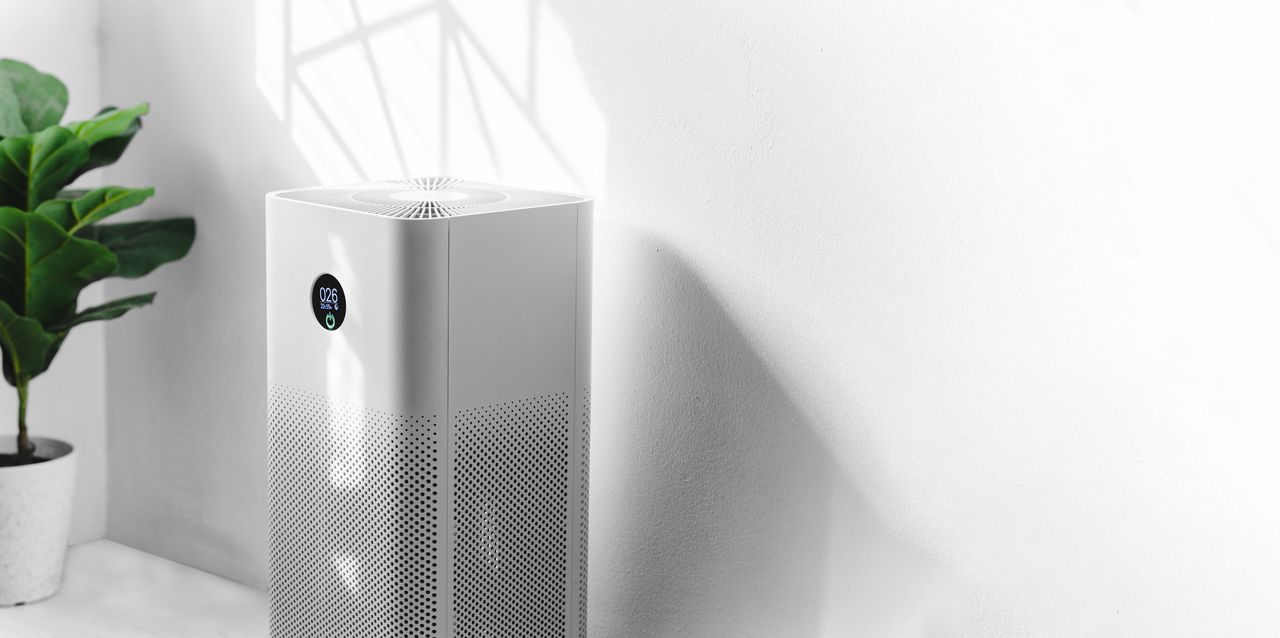How to use your air purifier: tips and tricks for getting the best results
How to use your air purifier, when to use it and how to keep it running perfectly

You're now the proud owner of one of the best air purifiers out there - but you might be wondering how to actually get the most out of your air purifier. Below, we detail how to use your air purifier to its full potential to get the best possible results for your home.
Air purifiers are straightforward enough - they simply suck in the air from your living space, trapping all the particles and pollutants into them, then recirculate the cleaner air back into your home for a fresher living environment.
But how, when and where should we be using our air purifiers to make sure that they are actually doing their job properly, and most efficiently? After all, you want to make sure that you're getting your money's worth from your new machine - whether you've chosen one of the best air purifiers for dust, or the best air purifiers for allergies.
Here are some top tips for getting the most out of your air purifier.
Tips and tricks: how to use your air purifier
1. Make sure the door is shut
Air purifiers work to change and filter the air in a single room, of a particular size, and if you leave doors or windows open, that means you’re constantly introducing yet more unfiltered air for the purifier to cope with. That doesn’t mean you shouldn’t open the windows and doors to air your home, because that’s important to prevent condensation and mould – just turn the purifier off when you do, so you’re not wasting energy.
2. Leave it on when you’re in
Air purification is a constant process, so if you only run your purifier for a short time, the air in your room will soon fill with impurities and irritants again, and you won't feel all of those lovely air purifier benefits in your home. Some more expensive purifiers have sensors that turn the purifier on and off depending on air quality, but if yours doesn’t, it’s best to keep it on for as long as you’re in that room. It’s fine to turn it off when you’re leaving, though – that helps reduce energy use and prolong the life and efficiency of the filter.
3. Clean the filters on schedule
Learning how to clean your air purifier is an important part of the maintenance process - and a step you certainly don't want to miss out. Air purifiers’ filters become less effective over time because they start to fill up with all the particles they’ve trapped. Some air purifiers need their filters replaced completely, while others have washable filters you can run under the cold tap to clean. The manual that came with your product will tell you how frequently to clean or replace your filters.
Sign up for the woman&home newsletter
Sign up to our free daily email for the latest royal and entertainment news, interesting opinion, expert advice on styling and beauty trends, and no-nonsense guides to the health and wellness questions you want answered.
Never wash a filter you’re not certain is washable – you could damage its fibres and make its filtering less effective.
4. Turn it down when you go to sleep
Air purifiers are very handy and a great addition to any space, but some might be a bit noisy for sleep - that is, if you fancy leaving yours on during the night. So if you don't want to turn it off, it's worth noting that some air purifiers have a night mode that will make them quieter. If not, just dial down the power to reduce the amount of noise your purifier makes. Or, if it's really bothersome, simply turn it off until you wake up - there's no evidence that suggests air purifiers are less effective during the day.

5. Ensure you properly ventilate your home to get the most from your air purifier
One of the best ways to get the most from your air purifier is to reduce its workload. For example, you can do other things to ventilate your home - such as by swapping air fryer, rather than a frying pan, or by using your cooker hood more. This will create cleaner air in your home generally, which means your air purifier will work where it is really needed, and give you the best shot at a clean, dust free space. Opening windows for ventilation and avoiding the use of spray cleaners and air fresheners can also help around the rest of your home.
6. Don’t put the purifier in a corner
Air purifiers are designed to catch airborne particles and, to do that, they need to have good airflow, so don’t put yours in a tight corner or other enclosed space where air doesn’t circulate very well. It’s a good idea to keep it well above ground level, especially when the heating’s on, as hot air rises and takes airborne particles with it. If you need more help ventilating your home, it might be an idea to get a dehumidifier vs an air purifier.
7. Put your air purifier near the problem
The closer your air purifier is to the source of any impurities, the more of those impurities it’s likely to catch. So, if you have a part of your home that gets particularly dusty and dirty, then it might be a good idea to place the air purifier there.
8. Don't put it near any other devices
If you have other air-related devices, such as humidifiers or dehumidifiers, don’t put them near your air purifier when it’s working – they’ll end up competing with each other for the same air.
9. Don’t get it wet
Very humid air, such as the air after you’ve had a long hot shower, is not great for air purifiers – they can suck in that moisture and deposit it on the filters, which can lead to mould. The last thing you want is a purifier that adds impurities to the air.
Writer and broadcaster Carrie Marshall has been writing about all kinds of technology since 1998. Carrie’s CV is a who’s who of magazines, newspapers, websites and radio programs ranging from T3, Woman & Home, Techradar and MacFormat to the BBC, Sunday Post and People’s Friend, and she offers straight-talking tech advice on BBC Radio Scotland every Monday. Carrie has also written thirteen non-fiction books and ghost-written two more, and she has also been the co-writer of seven books and a Radio 2 documentary series. Her memoir, Carrie Kills A Man, will be published in late 2022.